Dissertations
Student Published Dissertations
Since 2002, numerous student dissertations have been published by acclaimed publishers and are in turn being quoted in various publications.
The following published dissertations have been released. Visit the publisher website to order them online.
Receiving Back One’s Deeds: A Protestant Reading of Justification and Final Judgment According to Works in 2 Corinthians
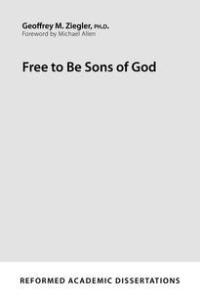
Free to Be Sons of God
By Geoff Ziegler (Ph.D., 2010)
P&R, 2018
Today, what constitutes freedom is identified in terms of human autonomy. Ziegler instead proposes a previously undeveloped thesis—that freedom is a gift from without, not from within. He proposes that being a son of God is essential to being free and that there is no tension between freedom and human obedience to commands—a relationship exemplified by Jesus. This is a concept previously undeveloped at an exegetical or a theological level.
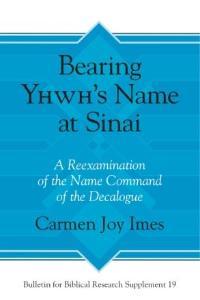
Bearing YHWH's Name at Sinai: A Reexamination of the Name Command of the Decalogue
By Carmen Imes (Ph.D., 2016)
Eisenbrauns, 2018
The Name Command (NC) is usually interpreted as a prohibition against speaking Yhwh’s name in a particular context: false oaths, wrongful pronunciation, irreverent worship, magical practices, cursing, false teaching, and the like. However, the NC lacks the contextual specification needed to support the command as speech related. Taking seriously the narrative context at Sinai and the closest lexical parallels, a different picture emerges—one animated by concrete rituals and their associated metaphorical concepts. The unique phrase ns' shm is one of several expressions arising from the conceptual metaphor, election as branding, that finds analogies in high-priest regalia as well as in various ways of claiming ownership in the Ancient Near East, such as inscribed monuments, the use of seals, and the branding of slaves. The NC presupposes that Yhwh has claimed Israel by placing Yhwh’s own name on her. In this light, the first two commands of the Decalogue reinforce the two sides of the covenant declaration: “I will be your God; you will be my people.” The first expresses the demand for exclusive worship and the second calls for proper representation. As a consequence, the NC invites a richer exploration of what it means to be a people in covenant with Yhwh—a people bearing his name among the nations. It also points to what is at stake when Israel carries that name “in vain.” The image of bearing Yhwh’s name offers a rich source for theological and ethical reflection that cannot be conveyed nonmetaphorically without distortion or loss of meaning.
"L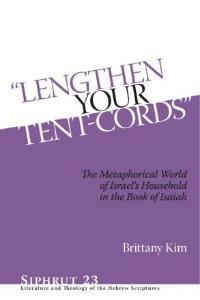 engthen Your Tent-Cords" : The Metaphorical World of Israel's Household in the book of Isaiah
engthen Your Tent-Cords" : The Metaphorical World of Israel's Household in the book of Isaiah
By Brittany Kim (Ph.D., 2014)
Eisenbrauns, 2018
The last few decades have seen a gradual shift in Isaianic studies as scholars have begun to give greater attention to the book’s literary features rather than focusing predominantly on the question of its sources. Brittany Kim’s study takes a literary approach, exploring how the book portrays Israel and its capital city using five metaphors that arise from the realm of household relationships: sons/children, daughter(s), mother, wife, and servant(s). Drawing selectively on the resources of metaphor studies and rhetorical criticism, Kim examines each metaphor separately to determine its rhetorical import and, if possible, to trace its development throughout the book. From the beginning of Isaiah, in which Zion appears as a vulnerable but promiscuous daughter in need of both paternal protection and discipline, through the book’s end, when her marital relationship has been restored and Zion has been transformed into a radiant and caring mother, Kim follows the thread of these five themes, showing ultimately how and why only those among yhwh’s children who willingly take on the role of servant experience the joy and delight of Zion’s maternal care. Pulling together insights from individual studies, “Lengthen Your Tent-Cords” draws connections and highlights contrasts among the various metaphors. Kim concludes by examining how Israel and Zion fit into YHWH’s royal household.
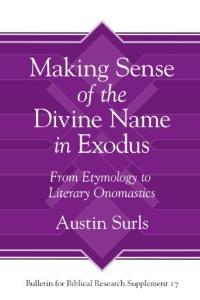
Making Sense of the Divine Name in the Book of Exodus: From Etymology to Literary Onomastics
By Austin Surls (Ph.D., 2015)
Eisenbrauns, 2017
The obvious riddles and difficulties in Exod 3:13–15 and Exod 6:2–8 have attracted an overwhelming amount of attention and comment. These texts make important theological statements about the divine name YHWH and the contours of the divine character. From the enigmatic statements in Exod 3:13–15, most scholars reconstruct the original form of the name as “Yahweh,” which is thought to describe YHWH’s creative power or self-existence. Similarly, Exod 6:3 has become a classic proof-text for the Documentary Hypothesis and an indication of different aspects of God’s character as shown in history. Despite their seeming importance for “defining” the divine name, these texts are ancillary to and preparatory for the true revelation of the divine name in the book of Exodus.
This book attempts to move beyond atomistic readings of individual texts and etymological studies of the divine name toward a holistic reading of the book of Exodus. Surls centers his argument around in-depth analyses of Exod 3:13–15, 6:2–8 and Exod 33:12–23 and 34:5–8. Consequently, the definitive proclamation of YHWH’s character is not given at the burning bush but in response to Moses’ later intercession (Exod 33:12–23). YHWH proclaimed his name in a formulaic manner that Israel could appropriate (Exod 34:6–7), and the Hebrew Bible quotes or alludes to this text in many genres. This demonstrates the centrality of Exod 34:6–7 to Old Testament Theology. The character of God cannot be discerned from an etymological analysis of the word yhwh but from a close study of YHWH’s deliberate ascriptions made progressively in the book of Exodus.
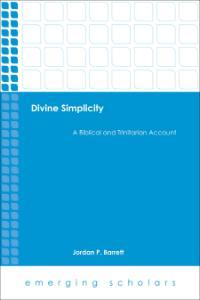
Divine Simplicity: A Biblical and Trinitarian Account
By Jordan Barrett (Ph.D., 2016)
Fortress Press, 2017
The Christian church has consistently confessed that the triune God of the gospel is simple and therefore beyond composition. The various divine attributes do not represent parts of God that, when combined, make up God’s nature. However, what was once part of the theological tradition from Irenaeus to Jonathan Edwards can now be said to have nothing to do with Christian theology. Divine Simplicity engages the recent critics and addresses one of their major concerns: that the doctrine of divine simplicity is not a biblical teaching. By analyzing the use of Scripture by key theologians from the early church to Karl Barth, Barrett finds that divine simplicity developed in order to respond to theological errors (e.g., Eunomianism) and to avoid misreading Scripture. Through close attention to Scripture, the work also argues that divine simplicity has two biblical roots: the names of God and the indivisible operations of the Trinity ad extra. After clarifying its biblical origins, the volume then explains how divine simplicity can be rearticulated by following a formal analogy from the doctrine of the Trinity—the analogia diversitatis(analogy of diversity)—in which the divine attributes are identical to the divine essence but are not identical to each other.
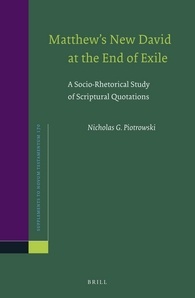 Matthew's New David at the End of the Exile: A Socio-Rhetorical Study of Scriptural Quotations
Matthew's New David at the End of the Exile: A Socio-Rhetorical Study of Scriptural Quotations
By Nicholas G. Piotrowski (Ph.D., 2013)
Brill, 2016
Matthew crowds more Old Testament quotations and allusions into the prologue than anywhere else in his gospel. In this volume, Nicholas G. Piotrowski demonstrates the narratological and rhetorical effects of such frontloading. Particularly, seven formula-quotations constellate to establish a redemptive-historical setting inside of which the rest of the narrative operates. This setting is defined by Old Testament expectations for David’s great son to end Israel’s exile and rule the nations. Piotrowski contends that the rhetorical effect of this intertextual storytelling was to provide the Matthean community with an identity—in a contentious atmosphere—in terms of God’s historical design for the ages, now fulfilled in Jesus and his followers.
A Tale of Two Families: 'This Generation' and the Elect in the Book of Matthew
By Susan Rieske (Ph.D., 2019)
Proquest 2019
A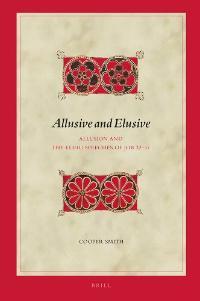 llusive and Elusive: Allusion and the Elihu Speeches of Job 32-37
llusive and Elusive: Allusion and the Elihu Speeches of Job 32-37
By Cooper Smith (Ph.D., 2019)
Brill 2022
Elihu is among the most diversely evaluated characters in the Hebrew Bible. Attending to the inner-Joban allusions in the Elihu speeches (Job 32–37) provides both an explanation and appreciation for this diversity. After carefully defining allusion, this work identifies and interprets twenty-three allusions in Job 32–37 that refer to Job 1–31 in order to understand both their individual significance in the Elihu speeches and their collective significance as a compositional feature of the unit. This allusiveness is shown to both invite and explain the varied assessments of Elihu’s merits in the history of interpretation.
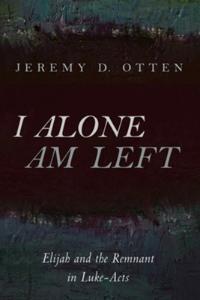 I Alone Am Left: Elijah and the Remnant in Luke-Acts
I Alone Am Left: Elijah and the Remnant in Luke-Acts
By Jeremy Otten (Ph.D., 2017)
Wipf & Stock 2021
In examining Luke's multiple appeals to the figure of Elijah, this study not only provides clarity to a fascinating but often misunderstood element of the Lukan narrative, but also provides a helpful model for understanding an even more perplexing question in Lukan studies, namely, the presentation of the nation of Israel. No New Testament author takes more interest in Elijah than Luke, who may allude to the Elijah-Elisha narratives as many as forty times. This study pushes past questions of typology and one-to-one correlation that have stalled scholarly discussion on the topic, examining the theological significance of Elijah in Luke-Acts as a literary motif. It is argued that, in drawing on a common association between Elijah and the Old Testament concept of remnant, Luke appeals to Elijah at key moments in the narrative in order to signal the development of his remnant theology. For Luke, as in the days of the prophets, the concept of remnant holds in tension God's irrevocable promises to Israel with the widespread rejection of God's new work of salvation; the faithfulness of a few with a hope for the nation as a whole; and the particular election of Israel with the message of salvation for all nations.
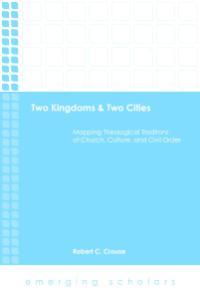 Two Kingdoms & Two Cities: Mapping Theological Traditions of Church, Culture, and Civil Order
Two Kingdoms & Two Cities: Mapping Theological Traditions of Church, Culture, and Civil Order
By Robbie Crouse (Ph.D., 2016)
Fortress Press 2017
The recent emergence of “two kingdoms” and “two cities” approaches to Christian social thinking is shown to have a key—and often unacknowledged—connection to Luther’s reshaping of the Augustinian paradigm. The project works for a better understanding of Luther’s own thought to help understand the convergences and divergences of Christian political theology in the twentieth century and today.
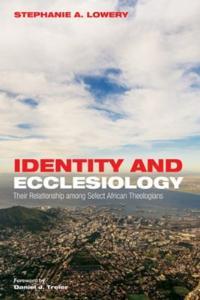 Identity and Ecclesiology: Their Relationship Among Select African Theologians
Identity and Ecclesiology: Their Relationship Among Select African Theologians
By Stephanie Lowery (Ph.D., 2016)
Pickwick 2017
Questions of identity continue to intrigue theologians in Africa, and African intellectuals often note communal emphases in African thought. This raises the question, how do ecclesiologies in Africa engage with identity concerns, and how do they envision the Christian identity? Stephanie Lowery argues in this book that theologians in Africa provide theological and biblical arguments regarding Christian identity that are relevant to individual Christians and ecclesiologies in all contexts. She also proposes the social identity approach as a tool that can both further articulate and advance these discussions.
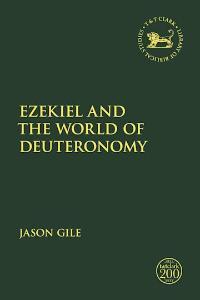 Ezekiel and the World of Deuteronomy
Ezekiel and the World of Deuteronomy
By Jason Gile (Ph.D., 2013)
Bloomsbury 2021
Jason Gile argues that the ideas of Deuteronomy influenced Ezekiel's response to the crisis surrounding the fall of Jerusalem and the Babylonian exile in significant ways, shaping how he saw Israel's past history of rebellion against Yahweh, present situation of divine judgment, and future hope of restoration. By examining Ezekiel's use of Deuteronomy's language and concepts, Gile stresses that the prophet not only accepted distinctive elements of Deuteronomic theology but in some cases drew from specific texts.
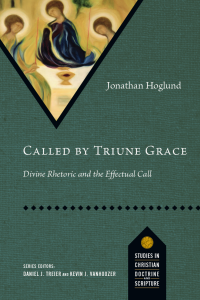 Called by Triune Grace: Divine Rhetoric and the Effectual Call
Called by Triune Grace: Divine Rhetoric and the Effectual Call
By Jonathan Hoglund (Ph.D., 2015)
IVP Academic, 2016
Christians confess that God calls people to salvation. Reformed Christians, in particular, believe this is an effectual calling, meaning that God sovereignly brings about salvation apart from human works. But in what sense does God actually 'call' us? Does a doctrine of effectual calling turn people into machines that lack any personal agency?
In his lucidly written and carefully researched study, Jonathan Hoglund provides a constructive treatment of effectual calling that respects both the Reformed tradition and non-Reformed critiques, while subjecting the doctrine to a fresh reading of Scripture with special attention given to the letters of Paul. Hoglund interprets divine calling to salvation as an act of triune rhetoric, in which Father, Son, and Holy Spirit work in a personal way to communicate new life. By bringing together theological exegesis, rhetorical theory, dogmatic reflection, and historical inquiry, Called by Triune Grace proves to be a feast—not only for the mind, but also for the spirit.
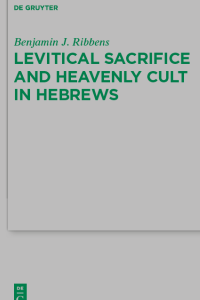 Levitical Sacrifice and Heavenly Cult in Hebrews
Levitical Sacrifice and Heavenly Cult in Hebrews
By Benjamin J. Ribbens (Ph.D., 2013)
de Gruyter 2016
This monograph examines Hebrews’ understanding of the relationship between old covenant sacrifices and Christ’s new covenant sacrifice, especially as it relates to the question of efficacy. Most scholars think the author of Hebrews strips the levitical sacrifices of most, if not all, efficacy, but this work affirms a more positive depiction of the levitical sacrifices. A mystical apocalyptic tradition stands behind Hebrews’ description of the heavenly cult , which establishes the framework for relating the levitical sacrifice to Christ’s sacrifice. The earthly, levitical cult was efficacious when it corresponded to or synchronized with the heavenly sacrifice of Christ. Still, the author of Hebrews develops the notion of the heavenly cult in unique ways, as Christ’s sacrifice both validates the earthly practice but also, due to his new covenant theology, calls for its end. Ribbens’ bold proposal joins a growing number of scholars that place Hebrews in the mystical apocalyptic tradition, highlights positive statements in Hebrews related to the efficacy of levitical sacrifices that are often overlooked, and relies on the heavenly cult to reconcile the positive and negative descriptions of the levitical cult.
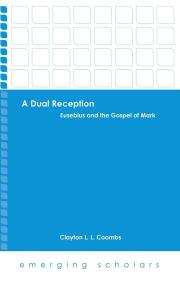 A Dual Reception: Eusebius and the Gospel of Mark
A Dual Reception: Eusebius and the Gospel of Mark
By Clayton Coombs (Ph.D., 2013)
Fortress Press, 2016
The ending of Mark's Gospel is one of the great unsolved mysteries. However, interest in the Markan conclusion is not a modern phenomenon alone. Comments about the different attested endings date back to Eusebius' Ad Marinum in the fourth century. Responding to the apparent discrepancy between the timing of the resurrection in Matthew and Mark, Eusebius notes one may solve the difficulty in one of two ways: either ignore the passage on the basis of the manuscript evidence or harmonize the two passages. Unfortunately, Eusebius' comments are all too often viewed through the lens of the modern text-critical endeavor, and for that reason, his intent has largely been missed. This volume argues that Eusebius' double solution can be read as recognizing the authority of both the Longer and the Abrupt conclusions to Mark's Gospel. The solution represents his ecumenical synthesis of those authors who preceded him, the "faithful and pious" from whom the Scriptures have been received. Only with this understanding of the double solution may we fully appreciate Eusebius' dual reception, which is indicative of a different approach to the issue—one that prioritizes the question of reception over authorship, and one that is comfortable affirming a pluriform canon.
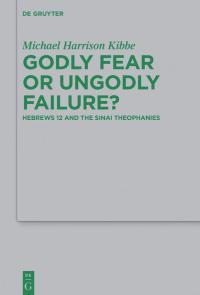 Godly Fear Or Ungodly Failure? Hebrews 12 and the Sinai Theophanies
Godly Fear Or Ungodly Failure? Hebrews 12 and the Sinai Theophanies
By Michael Harrison Kibbe (Ph.D., 2014)
de Gruyter 2016
A cursory glance at Hebrews' critique of Israel's fear at Sinai in Heb 12:18-29 suggests that the author has misunderstood or manipulated his sources. In the Pentateuch, the appointment of Moses as Israel's mediator receives explicit approval (Exod 19:9; Deut 5:28), while Heb 12:25 labels their request for mediation a "refusal" to heed the word of God. This book argues that Hebrews' use of the Sinai narratives resides on a complex trajectory established by four points: the Sinai covenant according to Exodus, the reenactment of that covenant according to Deuteronomy, the call for a NEW covenant according to Jeremiah, and the present reality of that covenant established by God and mediated by Jesus Christ.
The basis for Hebrews' critique arises from its insight that while Israel's request established covenant-from-a-distance, Jesus demonstrates that true covenant mediation brings two parties into a single space. The purpose for Hebrews critique lies in its summons to Zion, the mountain on which Jesus sits at the right hand of God as the high priestly mediator of the new covenant.
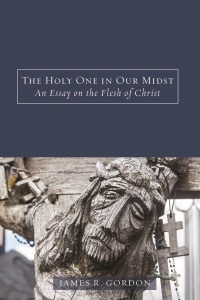 The Holy One in Our Midst: An Essay on the Flesh of Christ
The Holy One in Our Midst: An Essay on the Flesh of Christ
By James R. Gordon (Ph.D., 2015)
Fortress, 2016
The Holy One in Our Midst: An Essay on the Flesh of Christ aims to defend the doctrine of the extra Calvinisticum—the doctrine that maintains the Son of God was not restricted to the flesh of Christ during the incarnation—by arguing that it is logically coherent, biblically warranted, catholically orthodox, and theologically useful. It shows that none of the standard objections are devastating to the extra, that the doctrine is rooted in the claims of Christian Scripture and not merely a remnant of perfect being philosophical theology, and that the doctrine plays an important role in contemporary theological discussion. In this way, James Gordon revives an important Catholic doctrine that has fallen out of favor in contemporary theology. Also, this project aims to integrate biblical, philosophical, and systematic theology by showing that the tools and methods of each distinct discipline can contribute to the goals and aims of the others.
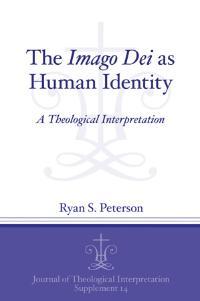 The Imago Dei as Human Identity: A Theological Interpretation
The Imago Dei as Human Identity: A Theological Interpretation
By Ryan Peterson (Ph. D., 2010)
Eisenbrauns 2016
Theologians and OT scholars have been at odds with respect to the best interpretation of the Imago Dei. Theologians have preferred substantialistic (e.g., image as soul or mind) or relational interpretations (e.g., image as relational personhood), and Old Testament scholars have preferred functional interpretations (e.g., image as kingly dominion). The disagreements revolve around a number of exegetical questions. How do we best read Genesis 1 in its literary, historical, and cultural contexts? How should it be read theologically? How should we read Genesis 1 as a canonical text? This book charts a path through these disagreements by offering a dogmatically coherent and exegetically sound canonical interpretation of the image of God.
Peterson argues that the fundamental claim of Genesis 1:26–28 is that humanity is created to image God actively in the world. “Made in the image of God” is an identity claim. As such, it tells us about humanity’s relationship with God and the rest of creation, what humanity does in the world, and what humanity is to become. Understanding the Imago Dei as human identity has the further advantage of illuminating humanity’s particular metaphysical makeup. Canonically, knowledge of the contours and purpose of human existence develops alongside God’s self-revelation. Tracing this development, Peterson demonstrates the coherence of the OT and NT texts that refer to the image of God. In the NT, Jesus Christ is understood as the realization of God’s image in the world and therefore the fulfillment of the description of humanity’s identity in Genesis 1. In addition to its specific focus on resolving interdisciplinary tensions for Christian interpretation of the Imago Dei, the argument of the book has important implications for ethics, the doctrine of sin, and the doctrine of revelation.
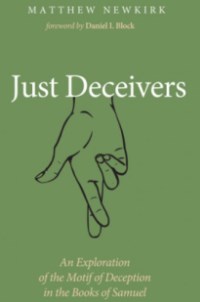 Just Deceivers: An Exploration of the Motif of Deception in the Books of Samuel
Just Deceivers: An Exploration of the Motif of Deception in the Books of Samuel
By Matthew Newkirk (Ph.D., 2013)
Pickwick, 2015
Does the Bible allow us to deceive? Is it ever right to lie? These are perennial questions that have been discussed and debated by theologians for centuries with little consensus. Entering this conversation, Just Deceivers provides a fresh analysis of this important topic through a comprehensive examination of the motif of deception in the books of Samuel. While many studies have explored deception in other Old Testament texts--especially the patriarchal narratives of Genesis--and a few articles have initiated examination of this motif in Samuel, Just Deceivers builds upon this groundwork and offers an exhaustive treatment of this theme in this important portion of the Hebrew Bible. Newkirk takes the reader through the books of Samuel, investigating every occurrence of deception in the narrative, exploring how the author depicts these various acts of deception, and then synthesizing the results to offer an exegetically based theology of deception. In so doing, this study both challenges commonly held views concerning the Bible's stance on falsehood and illustrates the importance of attending to the sophisticated literary character of biblical narrative.
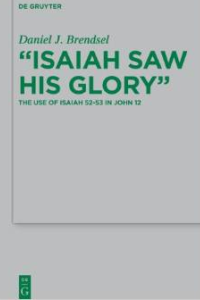 "Isaiah Saw His Glory": The Use of Isaiah 52-53 in John 12
"Isaiah Saw His Glory": The Use of Isaiah 52-53 in John 12
By Daniel Brendsel (Ph.D., 2013)
de Gruyter 2014
The influence of Isaiah on John’s narrative and theology has long been recognized, but it has yet to receive monograph-length attention. This study is a beginning attempt to fill that void through an examination of the use of Isaiah in the crucial hinge of John’s gospel—John 12:1–43. Beginning with a reading of Isaiah 40–55 illustrating a way in which early Christians may have read this important section of Scripture, the bulk of the study examines the pericopes in John 12:1–43, seeking to identify and interpret John’s use of Isaiah 52–53. It is concluded that a reading of this well-known Isaianic text rooted within its broader context in Isaiah, together with the mediating influence of other texts—notably Isa 6:9–10 and Zech 9:9–10—has fueled much Johannine theology, Christology, and ecclesiology. Moreover, mirroring the progression of Isa 52:7–53:1 in John 12 is the author’s way of underlining Jesus’ identity as the Servant of God and announcing that the second exodus prophesied by Isaiah is secured by the rejection (and death) of Jesus.
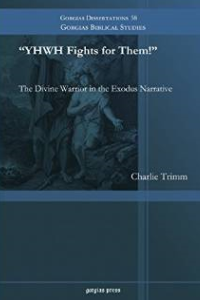 "YHWH Fights for Them!": The Divine Warrior in the Exodus Narrative
"YHWH Fights for Them!": The Divine Warrior in the Exodus Narrative
By Charlie Trimm (Ph.D., 2012)
Gorgias 2014
The divine warrior is an important motif in the Old Testament, leading many to study profitably the motif in its most prominent manifestations in poetic texts. This study builds on that foundation by examining the divine warrior in detail in the exodus narrative to construct a broader picture of the motif in the Old Testament. The heart of the work focuses on the exodus narrative. Many aspects of YHWH's actions in the narrative, such as the terminology, his nature weapons, his psychological attacks, the presence of supernatural envoys and disease, and his harmonious relationship with his people identify YHWH s role as that of a divine warrior. Several other elements match the description of the motif of the divine warrior elsewhere in the Old Testament, but are described in more detail in the narrative than in the briefer poetic divine warrior texts. The exodus narrative also expands the martial aspects of the divine warrior, as it includes a broader selection of nature weapons, psychological attacks directed at Pharaoh, the employment of cosmic enemies against Pharaoh, and assaults on the Egyptians gods. Finally, a possible connection between the divine control of Pharaoh (focusing in particular on the hardening of his heart) and the motif of the divine warrior is explored.
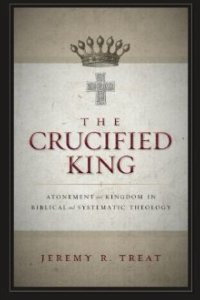
The Crucified King: Atonement and Kingdom in Biblical and Systematic Theology
By Jeremy Treat (Ph.D., 2013)
Zondervan 2014
The kingdom of God and the atonement are two of the most important themes in all of Scripture. Tragically, theologians have often either set the two at odds or focused on one to the complete neglect of the other. In The Crucified King, Jeremy Treat demonstrates that Scripture presents a mutually enriching relationship between the kingdom and atonement that draws significantly from the story of Israel and culminates in the crucifixion of Christ the king. As Israel's Messiah, he holds together the kingdom and the cross by bringing God's reign on earth through his atoning death. The kingdom is the ultimate goal of the cross, and the cross is the means by which the kingdom comes. Jesus' death is not the failure of his messianic ministry, nor simply the prelude to his royal glory, but is the apex of his kingdom mission. The cross is the throne from which he rules and establishes his kingdom. Using a holistic approach that brings together the insights of biblical and systematic theology, this book demonstrates not only that the kingdom and the cross are inseparable, but how they are integrated in Scripture and theology.
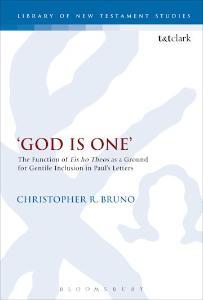 'God Is One': The Function of "Eis O Theos" As a Ground for Gentile Inclusion in Paul's Letters
'God Is One': The Function of "Eis O Theos" As a Ground for Gentile Inclusion in Paul's Letters
By Chris Bruno (Ph.D., 2010)
Bloomsbury 2013
In discussions of Paul's letters, much attention has been devoted to statements that closely identify Christ with Israel's God (i.e., 1 Cor 8:6). However, in Rom 3:30 and Gal 3:20, Paul uses the phrase "God is one" to link Israel's monotheistic confession and the inclusion of the Gentiles in the people of God. Therefore, this study traces the OT and early Jewish backgrounds of the phrase "God is one" and their possible links to Gentile inclusion. Following this, Christopher Bruno examines the two key Pauline texts that link the confession of God as one with the inclusion of the Gentiles. Bruno observes a significant discontinuity between the consistent OT and Jewish interpretations of the phrase and Paul's use of "God is one" in relation to the Gentiles. In the both the OT and early Jewish literature, the phrase functions as a boundary marker of sorts,distinguishing the covenant people and the Gentiles. The key exception to this pattern is Zech 14:9, which anticipates the confession of God as one expanding to the nations. Similarly, in Romans and Galatians, the phrase is not a boundary marker, but rather grounds the unity of Jew and Gentile. The context and arguments in Rom 3:30 and Gal 3:20 lead to the conclusion that Paul's monotheism must now be understood in light of the Christ event; moreover, Zech14:9 may play a significant role in the link between Paul's eschatological monotheism and his argument for the inclusion of the Gentiles in Romans and Galatians.
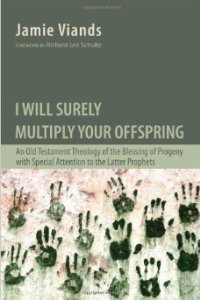 I Will Surely Multiply Your Offspring: An Old Testament Theology of the Blessing of Progeny with Special Attention to the Latter Prophets
I Will Surely Multiply Your Offspring: An Old Testament Theology of the Blessing of Progeny with Special Attention to the Latter Prophets
By Jamie Viands (Ph.D., 2010)
Pickwick 2013
After creating man and woman, God's first recorded blessing upon them is "be fruitful and multiply." Like the blessings of food and health, the human experience of procreation is so common that we may overlook its importance within the biblical narrative. However, I Will Surely Multiply Your Offspring, a comprehensive examination of the progeny blessing, demonstrates that this motif is both prevalent and significant within the Old Testament by tracing its development throughout the redemptive-historical narrative. Viands identifies different progeny blessing traditions associated with the Abrahamic covenant, the Sinai covenant, and the new covenant, and describes their interrelationships as well as their relationship to the universal blessing first found in Genesis 1. This study lays the foundation for a biblical worldview of human proliferation, contributing to contemporary discussions concerning whether humans are obligated to bear children as well as procreation ethics.
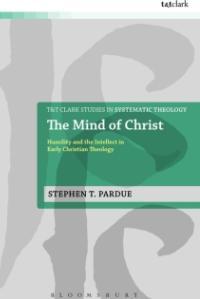 The Mind of Christ: Humility and the Intellect in Early Christian Theology
The Mind of Christ: Humility and the Intellect in Early Christian Theology
By Stephen Pardue (Ph.D., 2012)
Bloomsbury, 2013
This book brings a variety of theological resources to bear on the now widespread effort to put humility in its proper place. In recent years, an assortment of thinkers have offered competing evaluations of humility, so that its moral status is now more contentious than ever. Like all accounts of humility, the one advanced in this study has to do with the proper handling of human limits. What early Christian resources offer, and what discussions of the issue since the eighteenth century have often overlooked, is an account of the ways in which human limits are permeable, superable and open to modification because of the working of divine grace. This notion is especially relevant for a renewed vision of intellectual humility—the primary aim of the project—but the study will also suggest the significance of the argument for ameliorating contemporary concerns about humility’s generally adverse effects.
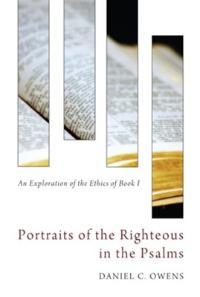 Portraits of the Righteous in the Psalms: An Exploration of the Ethics of Book I
Portraits of the Righteous in the Psalms: An Exploration of the Ethics of Book I
By Daniel Owens (Ph.D., 2012)
Wipf & Stock, 2013
What have the Psalms to do with ethics? Readers prize the Psalter for its richly theological prayers, but into these prayers are woven a variety of ethical issues. This book explores the ethics of the Psalter by examining the four portraits of the righteous person that punctuate Book I. It begins by studying these psalms as individual compositions and then employs both the canonical approach and dialogic criticism to identify the complex relationship between the portraits' vision of the righteous life and its outcome. Does the righteous person enjoy security and the good life? The answer may be surprising, but joining the psalmist on the rocky path of the interface of faith and experience is certain to prove a formative experience.
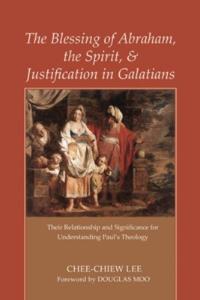 The Blessing of Abraham, the Spirit, & Justification in Galatians: Their Relationship and Significance for Understanding Paul's Theology
The Blessing of Abraham, the Spirit, & Justification in Galatians: Their Relationship and Significance for Understanding Paul's Theology
By Chee-Chiew Lee (Ph.D., 2010)
Pickwick, 2013
What has the Spirit to do with the blessing of Abraham and justification? This book challenges the common assumption that the Abrahamic blessing and the Spirit are equated in Gal 3:14 and points out how an accurate understanding of the relationship between these two motifs contributes significantly to appreciating Paul's overall argument in Galatians and his theology of justification. Even though Paul does not cite Old Testament passages on the promise of the Spirit in Gal 3:1-14, his arguments are nonetheless deeply influenced by the whole prophetic tradition about the Spirit. Most current discussions on the present and future aspects of justification have yet to consider the Spirit's role in the latter. Given the renewed interest in Pauline justification, this book contributes to this important aspect of the Spirit's role in future justification, which needs to be developed further in Pauline and New Testament theology.
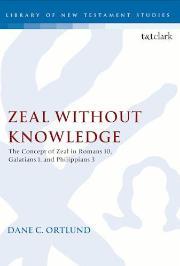 Zeal Without Knowledge: The Concept of Zeal in Romans 10, Galatians 1, and Philippians 3
Zeal Without Knowledge: The Concept of Zeal in Romans 10, Galatians 1, and Philippians 3
By Dane Ortlund (Ph.D., 2010)
Bloomsbury, 2012
This book examines the concept of ‘zeal’ in three Pauline texts (Rom 10:2; Gal 1:14; Phil 3:6) as a way-in to discussion of the ‘New Perspective’ on Paul. The concept of zeal has been discussed in a sustained way by James D. G. Dunn, who argues that Paul was drawing on a long and venerable tradition of Jewish zeal for the nation of Israel, that is, a concern to maintain Israel’s distinction from the surrounding nations by defending and reinforcing its boundaries. Ortlund interacts with Dunn, agreeing that this concern for distinctiveness was a crucial, and neglected, concern of Paul's before his conversion. Nevertheless, Ortlund contends that Dunn has presented an overly narrow understanding of Pauline zeal that does not sufficiently locate zeal in the broader picture of general obedience to Torah in Jewish tradition. As such, Ortlund shows in this work that zeal refers most immediately to general obedience to Torah - including, but not to be centrally circumscribed as, ethnic distinction.
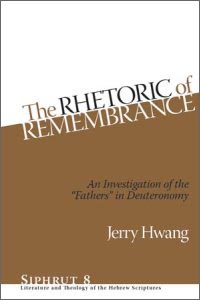
The Rhetoric of Remembrance: An Investigation of the "Fathers" in Deuteronomy
By Jerry Hwang (Ph.D., 2009)
Eisenbrauns 2012
The Rhetoric of Remembrance demonstrates that Deuteronomy depicts the corporate solidarity of Israel in the land promised to the "fathers" (part 1), under the sovereignty of the same "God of the fathers" across the nation's history (part 2), as governed by a timeless covenant of the "fathers" between YHWH and his people (part 3). In the narrative world of Deuteronomy, the "fathers" begin as the patriarchs, while frequently scrolling forward in time to include every generation that has received YHWH's promises but nonetheless continues to await their fulfillment.
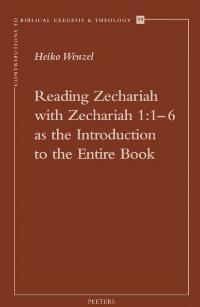 Reading Zechariah with Zechariah 1:1-6 as the Introduction to the Entire Book
Reading Zechariah with Zechariah 1:1-6 as the Introduction to the Entire Book
By Heiko Wenzel (Ph.D., 2008)
Brill 2016
In light of the widely acknowledged phenomenon that Zechariah refers to previous Scripture, this thesis demonstrates that these references can significantly contribute to Zechariah’s argument by drawing on Mikhail M. Bakhtin’s insight of the dialogical orientation of words. The dialogical orientation of Zechariah’s word with regard to previous Scripture and Zechariah’s audience establishes Zech 1:1–6 as the introduction to the entire book. It also develops a theology of transition and of waiting. Seven case studies demonstrate that the call of Zechariah 1:3-4 sounds through the entire book. The call to be different from the ancestors in a time of waiting emphasizes the people’s responsibility to live faithfully within the Sinai covenant. It also points to the prophetic function of the so-called apocalyptic notions in Zechariah and exhibits Zechariah’s specific contribution to the Book of the Twelve, to the Old Testament and for the church.
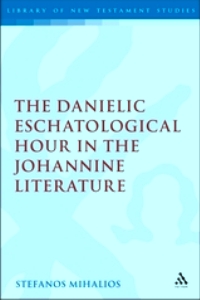 The Danielic Eschatological Hour In The Johannine Literature
The Danielic Eschatological Hour In The Johannine Literature
By Stefanos Mihalios (Ph.D., 2009)
Bloomsbury 2011
Stefanos Mihalios examines the uses of the ‘hour’ in the writings of John and demonstrates the contribution of Danielic eschatology to John’s understanding of this concept. Mihalios begins by tracing the notion of an eschatological time in the Old Testament within expressions such as ‘in that time’ and ‘time of distress,’ which also appear in the book of Daniel and relate to the eschatological hour found in Daniel. Mihalios finds that even within the Jewish tradition there exists an anticipation of the fulfillment of the Danielic eschatological time, since the eschatological hour appears in the Jewish literature within contexts that allude to the Danielic end-time events. Mihalios moves on to examines the Johannine eschatological expressions and themes that have their source in Daniel, finding evidence of clear allusions whenever the word ‘hour’ arises. Through this examination, he concludes that for the Johannine Jesus use of the term ‘hour’ indicates that the final hour of tribulation and resurrection, as it is depicted in Daniel, has arrived.
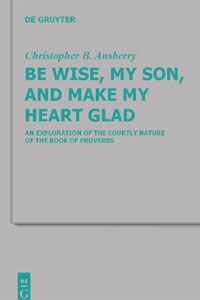 Be Wise, My Son, and Make My Heart Glad: An Exploration of the Courtly Nature of the Book of Proverbs
Be Wise, My Son, and Make My Heart Glad: An Exploration of the Courtly Nature of the Book of Proverbs
By Christopher Ansberry (Ph.D., 2010)
De Gruyter 2011
The social and intellectual context of the material in the book of Proverbs has given rise to several proposals concerning the nature of the constituent compendia within the document as well as the function of the discourse as a whole. In light of the problems inherent in an investigation of the nature and function of Proverbs, the present study focuses on the social dimensions of the document within its distinct, literary context. That is, the study attempts to examine the nature and function of the sapiential material within its new performance context, viz., the discursive context, the Sitz im Buch. This form of analysis moves beyond the investigation of individual aphorisms to provide a concrete context through which to view the various components of the discourse as well as the discourse as a whole. In the main, the study explores the formal, discursive, and thematic features of the constituent collections within the book of Proverbs in order to identify the nature and function of the work. More specifically, the study highlights the fundamental features of the book’s discourse setting, the thematic development of the material, the ethos of the individual collections and their role within Proverbs in order to ascertain the degree to which the document may be considered a courtly piece.
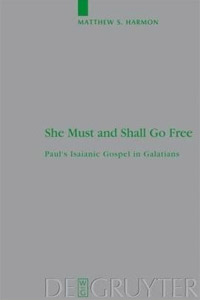 She Must and Shall Go Free: Paul's Isaianic Gospel in Galatians
She Must and Shall Go Free: Paul's Isaianic Gospel in Galatians
By Matthew Harmon (Ph.D., 2006)
Walter de Gruyter 2010
Scholars have long recognized the importance of Paul´s citations from the Pentateuch for understanding the argument of Galatians. But what has not been fully appreciated is the key role that Isaiah plays in shaping what Paul says and how he says it, even though he cites Isaiah explicitly only once (Isaiah 54:1 in Galatians 4:27). Using an intertextual approach to trace more subtle appropriations of Scripture (i.e., allusions, echoes and thematic parallels), Harmon argues that Isaiah 49-54 in particular has shaped the structure of Paul´s argument and the content of his theological reflection in Galatians. Each example of Isaianic influence is situated within its original context as well as its new context in Galatians. Attention is also paid to how those same Isaianic texts were interpreted in Second Temple Judaism, providing the larger interpretive context within which Paul read Scripture. The result is fresh light shed on Paul's self-understanding as an apostle to the Gentiles, the content of his gospel message, his reading of the Abraham story and the larger structure of Galatians.
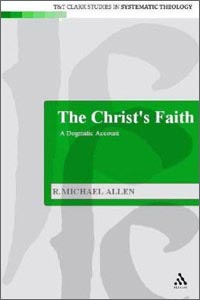 The Christ's Faith: A Dogmatic Account
The Christ's Faith: A Dogmatic Account
By R. Michael Allen (Ph.D., 2007)
Bloomsbury 2009
The Christ’s Faith coheres with orthodox Christology and Reformation soteriology, and needs to be affirmed to properly confirm the true humanity of the incarnate Son. Without addressing the interpretation of the Pauline phrase pistis christou, this study offers a theological rationale for an exegetical possibility and enriches a dogmatic account of the humanity of the Christ. The coherence of the Christ’s faith is shown in two ways. First, the objection of Thomas Aquinas is refuted by demonstrating that faith is fitting for the incarnate Son. Second, a theological ontology is offered which affirms divine perfection and transcendence in qualitative fashion, undergirding a Chalcedonian and Reformed Christology. Thus, the humanity of the Christ may be construed as a fallen human nature assumed by the person of the Word and sanctified by the Holy Spirit. The dogmatic location of The Christ’s Faith is sketched by suggesting its (potential) function within three influential theological systems: Thomas Aquinas, federal theology, and Karl Barth. Furthermore, the soteriological role of the doctrine is demonstrated by showing the theological necessity of faith for valid obedience before God.
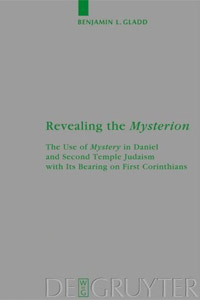 Revealing the Mysterion: The Use of Mystery in Daniel and Second Temple Judaism with Its Bearing on First Corinthians
Revealing the Mysterion: The Use of Mystery in Daniel and Second Temple Judaism with Its Bearing on First Corinthians
By Benjamin Gladd (Ph.D., 2008)
Walter de Gruyter 2008
Scholars largely agree that the NT term “mysterion” is a terminus technicus, originating from Daniel. This project traces the word in the Dead Sea Scrolls and other sectors of Judaism. Like Daniel, the term consistently retains eschatological connotations. The monograph then examines how mystery functions within 1 Corinthians and seeks to explain why the term is often employed. The apocalyptic term concerns the Messiah reigning in the midst of defeat, eschatological revelations and tongues, charismatic exegesis, and the transformation of believers into the image of the last Adam.
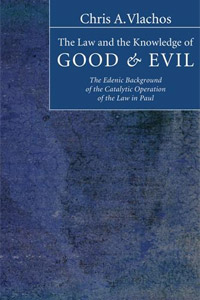 The Law and the Knowledge of Good & Evil: The Edenic Background of the Catalytic Operation of the Law in Paul
The Law and the Knowledge of Good & Evil: The Edenic Background of the Catalytic Operation of the Law in Paul
By Chris Vlachos (Ph.D., 2006)
Pickwick 2009
First Corinthians 15:56b, "The power of sin is the law," is both puzzling and neglected. It is puzzling since there appears to be no precursor in 1 Corinthians to the law-critical statement found there. It is neglected because of its size. Nevertheless, the short verse offers the opportunity to analyze in a rudimentary state Paul's law-sin notion that appears full-blown in Romans, and the absence of a polemical setting allows scholars to examine a law-critical statement issued during a polemical lull. In The Law and Knowledge of Good and Evil, Vlachos weighs attempts to explain the presence of 1 Cor 15:56 in 1 Corinthians and argues that the Genesis Fall narrative, where the tempter plied his seductions by way of the commandment, provides the theological substructure to Paul's understanding of the law's provocation of sin. In doing so, Vlachos contends that Paul reaches the historical high water mark of his polemic against the salvific efficacy of the law by locating a law-sin nexus in Eden, and, contrary to some recent perspectives on Paul, he argues that the edenically informed axiom in 1 Cor 15:56 suggests that Paul's fundamental concern with the law was rooted in primordial rather than ethnic soil. While studies of Paul and the law have tended to bypass Eden, The Law and Knowledge of Good and Evil breaks ground by moving the argument beyond Second Temple Judaism to the Genesis Fall account, where the prohibition against partaking of the knowledge of good and evil led to the knowledge of sin.
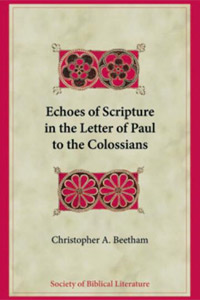 Echoes of Scripture in the Letter of Paul to the Colossians
Echoes of Scripture in the Letter of Paul to the Colossians
By Christopher A. Beetham (Ph.D., 2005)
SBL 2010 and Brill 2008
While the use of the Old Testament in the New Testament has captured the attention of biblical scholars over the years, no study has been devoted to the presence of Scripture in Colossians, largely because there are no explicit quotations in Colossians. With the introduction of literary intertextuality into the discipline, however, scholars have begun to devote more attention to the NT authors’ less explicit references to Scripture, often labeled as ‘allusions’ and/or ‘echoes.’ Scholars, however, continue to debate what constitutes an allusion or echo, or how one validates a given proposal as such. This study proposes new definitions of these terms and offers a methodology on how to detect and validate them, using Colossians as a test case.
